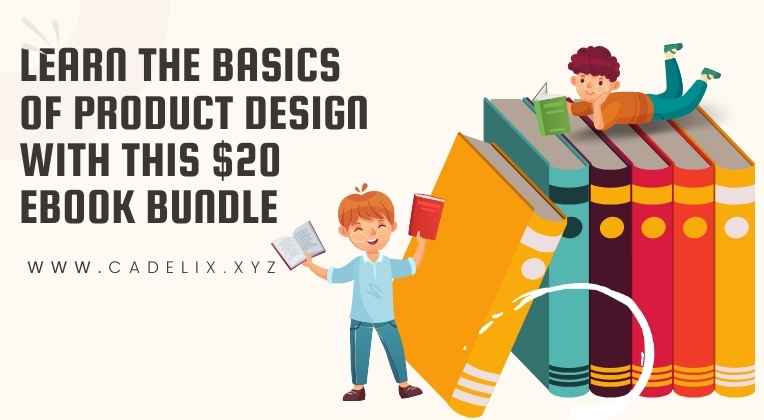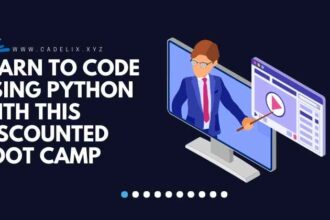Product Design Introduction
The field of product design combines the field of functionality with creativity. Whether you are a starting entrepreneur, an experienced designer wanting to refine your skills or you are just trying a curious person all about how items form, an understanding of the basics of thing design could open new ways for creativity.
What if you could take an idea and turn it into something real? Aesthetics aren’t everything, it’s about solving problems and meeting a users needs. This rewarding discipline is one you can go into with the right knowledge — and tools.

If you are in a hurry to jumpstart your journey in product design without spending too much, you are in luck —- our killer eBook bundle costs only $20! From learning user needs to discovering the best prototype techniques, this collection addresses everything. As I dive deep into each topic ranging from what makes great product design so impactful, here’s what it looks like this week.
User Needs and Wants understanding
One of the pillars of good product design is to understand the user needs and wants. What’s more is that it goes beyond surface level preferences and unveils real motivations.
Engage with your target audience first. Ask people to conduct surveys, have interviews or just ‘casual conversations’. What challenges do they face? So what solutions are they looking for?
This data will help to reveal patterns in behavior and expectations. They pain points and desires. The information that forms this basis is used by your design process.
This all hinges on empathy. To fully get into users’ shoes you need to step into them. Personas give us another way of visualizing different user types, allowing us to create designs that fit each persona.
Know that needs will change over time from changing trends or technological advancements. Keeping track of these shifts will help you keep your products current, relevant as your business continues to compete.
Concept Development and Idea Development
The product design process has an I and a D in the middle. This phase is when a lot of creative juices flow in and bring abstract ideas to a product solution.
Said brainstorming sessions create innovation. When there are many perspectives, we inevitably get unexpected breakthroughs. It takes a fire of creativity for team members to work together to fuel that.
Visual concepts: sketches and mind maps. With these tools on your side you get clarity and uncover relationships between other ideas. Why be shy with wild suggestions. Some of the most unconventional ideas can yield marvelous results.
This stage requires a top priority in user feedback. Potential customers will engage with you to refine your vision, and align them with what’s real needs. Try things out and some won’t stick, fit, or fall into place.
Live with iteration as part of your ideation process. With each round of refinement you continue to inch your way closer to a viable concept while ensuring the final design is both innovative from a conceptual perspective while being practical from a production standpoint.
Prototyping and Testing
The prototyping is a critical phase in product design. This lets designers prove an idea in a tangible form, as opposed to solely providing clients and friends with a glimpse at their concepts. It could be from sketches, digital models to physical prototypes.
Just as important is testing these prototypes. It gives you insight into what is working and what isn’t as early as possible. Watching users interact with your prototype can provide you insight which words alone cannot give.
This feedback gives us crudeness which we iterate based on to refine design further. By prototyping and testing your ideas over each cycle, you narrow your way to a final product that gets users what they need.
It lets ideas be creative, but also real. In this stage, your pursuit of failure should lead you to embrace it, and both success as well as failure within this stage, because then will your innovation lead to an end result that will resonate with your audience.
Manufacturing and Product Design
Manufacturing and production is the product design part that you need to design for manufacturing and production which is a must to make your concept become real. In it we design not only good looking pieces, but good looking pieces that can be produced on a mass scale.
If you know the process then it can help you appreciate the choices in your design. That includes picking materials, thinking through assembly methods, and knowing the muscle of several machines. The production of a well-designed product should waste and cost less.
A good eBook bundle keeps you on the right path with insights into how to optimize designs for manufacturing efficiency and effectiveness. You’ll learn how to cut your transition between prototype and finished product from inconvenient, into an informed step.
Having these skills in your back pocket, you’ll be ready to cut through the intricacies of making your idea real. With this comprehensive $20 eBook bundle, you will gain the knowledge to empower you as a designer, to ensure that your creations are feasible, ready and prepared to be brought to market and at an affordable price point. Learon now, it invests in tomorrow’s innovations!




